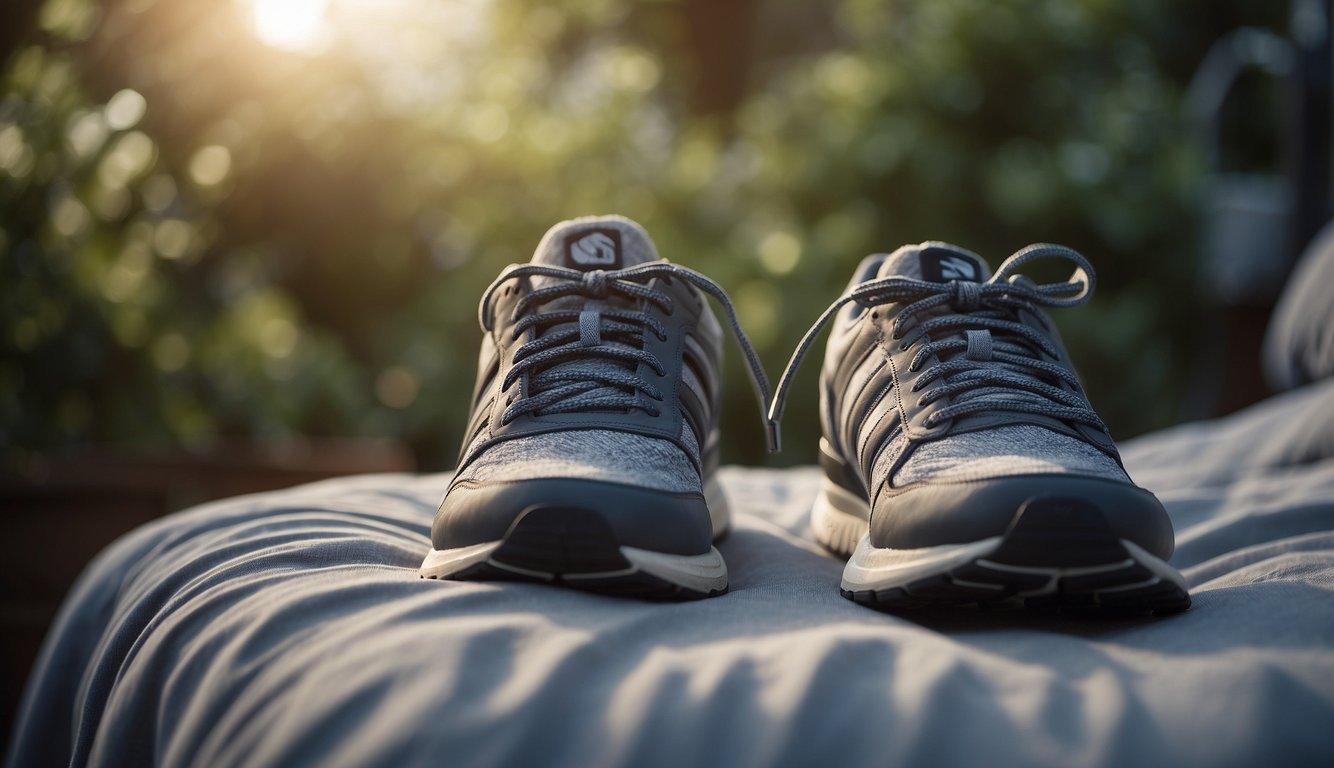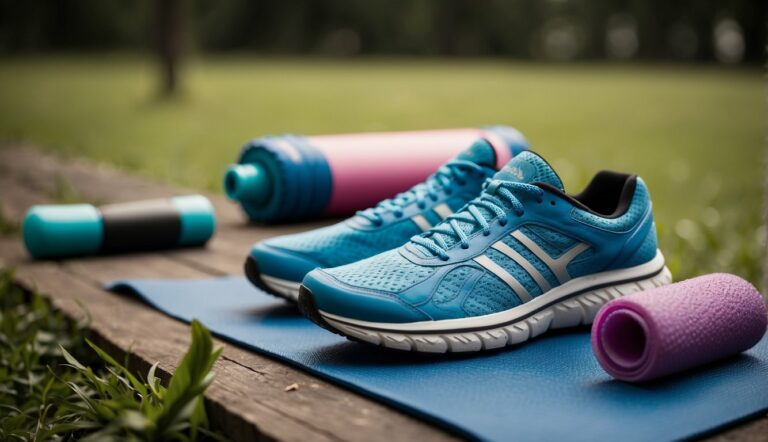Role of Sleep in Post-Run Recovery: Enhancing Athletic Restoration
As a running coach, I understand the crucial role that sleep plays in post-run recovery. Proper sleep facilitates bodily repair and recovery after the physical exertion of a run. In fact, it’s during the deep stages of sleep that our bodies conduct most of their healing—mending muscle tissue, replenishing energy stores, and balancing hormones that are vital for recovery. Hence, ensuring a restful sleep cycle is as important as the run itself for any runner’s training regimen.
My experience has consistently shown that runners who prioritize sleep in their training schedule can improve their performance and reduce injury risk. Sleep’s contribution to recovery extends beyond physical repair. It also aids in mental recuperation, allowing the neural processes that contribute to motor skills and cognitive function to reset and strengthen. This is especially relevant for runners who need to maintain sharp mental acuity for endurance and tactical decision-making during long-distance events.
Incorporating quality sleep into a runner’s recovery strategy is not just beneficial, it’s essential. I always advise runners to be mindful of their sleep patterns and aim for consistent, uninterrupted sleep cycles as part of their training. Restorative sleep should be a non-negotiable element in a runner’s holistic approach to recovery.
Importance of Sleep in Physical Recovery

Sleep is essential for runners as it facilitates physical recovery through hormonal regulation and muscle repair. Ensuring quality sleep after a run impacts recovery, reduces muscle soreness, and prepares the body for subsequent training.
Hormonal and Metabolic Changes During Sleep
During sleep, my body undergoes hormonal and metabolic changes that are crucial for recovery. The release of growth hormone, which occurs during deep sleep, aids in tissue repair and muscle growth.
This hormone contributes to the healing process of muscles that endure micro-tears during a run. Adequate sleep also helps in maintaining glycogen stores, which are the muscles’ primary energy source during prolonged exercises. Sufficient glycogen levels are necessary to prevent early fatigue in subsequent runs.
Sleep and Muscle Repair
Quality sleep is closely tied to muscle repair, which is imperative for runners. The protein synthesis that repairs and builds muscle fibers is more effective during sleep cycles.
As a UESCA certified running coach, I’ve seen how lack of sleep can exacerbate muscle soreness and delay healing. Prioritizing sleep after rigorous training helps to ensure muscles are given the necessary time to recuperate and strengthen, which is especially important as runners age and their recovery processes slow down.
Optimizing Post-Run Recovery

Adequate post-run recovery is essential to replenish energy stores, repair muscle tissue, and prepare for the next workout. It’s key to focus on nutrition, hydration, active recovery techniques, and rest days.
Post-Run Nutrition and Hydration
After running, refueling with the right balance of carbohydrates and proteins is critical for muscle recovery. Aim for a 3:1 ratio of carbohydrates to protein to maximize glycogen replenishment and protein synthesis. Here’s a quick breakdown:
- Carbohydrates: Essential for replenishing glycogen stores
- Examples: Rice, pasta, fruits
- Proteins: Vital for muscle repair
- Examples: Chicken breast, Greek yogurt, legumes
Hydration also plays a crucial role in recovery. Rehydration should involve water to restore fluid levels and electrolytes to balance mineral content.
- Water: Approximately 16-24 ounces for every pound lost during the run
- Electrolytes: Necessary to maintain nerve and muscle function
- Sources: Electrolyte-replenished drinks, coconut water
Active Recovery Techniques
Active recovery can facilitate blood circulation, which helps in nutrient delivery and waste removal from muscles. Techniques include:
- Light jogging or walking: To lower heart rate gradually
- Dynamic stretching: To maintain flexibility and decrease muscle stiffness
Incorporate these techniques soon after your run to enhance overall recovery and readiness for future workouts.

Rest and Recovery Days
Proper recovery isn’t just about what you do post-run—it’s also about what you don’t do. Rest days are your body’s opportunity to repair and strengthen itself.
- Rest day: At least one day a week should be reserved for complete rest or very light activity that doesn’t stress the body.
- Sleep: Crucial for hormonal balance and tissue repair. Adults should aim for 7-9 hours of quality sleep per night.
By incorporating appropriate rest and active recovery days into your training schedule, you can bounce back stronger and reduce the risk of overuse injuries.
Role of Stress and Recovery Balance
In my experience as a UESCA certified running coach, understanding the fine line between stress and recovery is crucial for a runner’s performance and health. Sleep plays an essential role in mediating the effects of training stress, aiding recovery, and preventing burnout.
Understanding Stress and Recovery Cycles
Stress: When I coach runners, I emphasize that stress isn’t just mental; it’s physiological. Intense running induces stress that triggers cortisol production, which is necessary for adaptation. However, excessive cortisol can lead to fatigue and injury.
- Training Stress: High-intensity running or long distances.
- Cortisol Response: An increase can help with adaptation but may lead to fatigue.
- Recovery: Essential to balance stress and includes rest and sleep.
Recovery: Proper recovery is characterized by adequate sleep, which reduces cortisol levels, mitigates fatigue, and repairs muscles. As a coach, I’ve seen that quality sleep after running is one of the best recovery strategies to enhance performance and prevent injury.
- Sleep: Vital for muscular recovery and reduction of cortisol.
- Rest Days: Necessary to prevent overtraining and burnout.
Mental Recovery Strategies
Mental Recovery: Mental recovery is just as important as the physical aspect. Meditation and deep breathing exercises are tools I recommend to my runners to reduce mental stress and enhance recovery.
- Meditation: Helps lower cortisol levels and improve stress management.
- Deep Breathing: Facilitates relaxation and can improve sleep quality.
Incorporating mental recovery strategies into a runner’s routine promotes overall well-being and supports the body’s physical recovery processes. As a UESCA certified running coach, I advise runners to practice these techniques regularly to maintain balance in their training and recovery cycles.
Supplementary Recovery Techniques

In addition to the fundamental role of sleep in post-run recovery, there are several techniques that can further assist in muscle recuperation and flexibility. Stretching and the use of foam rollers can significantly improve range of motion, while massages and complementary therapies serve to enhance blood flow and relax the muscles.
Stretching and Foam Rolling
I recommend incorporating both static and dynamic stretches to your recovery routine. Static stretches involve holding a stretch for a period of time, which can help improve flexibility and reduce the risk of injuries. It’s best to perform them post-run when the muscles are warm:
- Hamstring Stretch: Hold for 15-30 seconds.
- Calf Stretch: Hold for 15-30 seconds.
Dynamic stretches, which involve active movements where joints and muscles go through a full range of motion, are also crucial. They not only increase circulation but also prepare the body for the cool-down phase after a run.
Using a foam roller can help relieve muscle tightness and improve blood flow. Key areas to focus on include:
| Muscle Group | Rolling Technique | Duration |
|---|---|---|
| Calves | Long, smooth rolls | 30-60 seconds per leg |
| Quads | Roll from hip to knee | 30-60 seconds per leg |
Massage and Complementary Therapies
Massages are effective in reducing muscle tension and increasing circulation. For those without regular access to a professional masseuse, a massage gun can serve as an alternative. It helps to target specific muscle groups and can reduce lactic acid buildup, which often leads to soreness.
Additionally, yoga can be viewed as a complementary therapy due to its myriad of benefits for runners. Not only does it help with increasing flexibility, but it also has potential in improving heart rate recovery. Yoga sessions with a focus on deep breathing can aid in this:
- Downward Dog: Enhances circulation.
- Child’s Pose: Allows for deep breathing and relaxation.
Remember to listen to my body and respond appropriately, allowing enough time for these supplementary techniques to be effective in the recovery process.
Tailoring Recovery to Individual Needs

As a running coach, I emphasize that recovery from running must be as personalized as the training plan itself. Each runner’s body responds differently to training, and their recovery needs will vary based on multiple factors.
Adapting to Age and Fitness Level
Age: Younger runners often bounce back faster from a long run due to their naturally quicker recovery processes. Conversely, older runners might experience increased muscle soreness and require more time to recover. It’s crucial to adjust recovery time to accommodate these age-related changes.
Fitness Level: Novice runners may experience more pronounced muscular fatigue and soreness than their seasoned counterparts. I advise new runners to prioritize rest, while more experienced runners can implement active recovery strategies aligned with their robust endurance and muscle conditioning.
Personalized Recovery Regimens for Runners
A personalized recovery regimen for runners is not a luxury; it’s a necessity. I’ve observed that runners who tailor their recovery to their lifestyle, injury prevention, and running history often experience fewer setbacks and improved performance.
Training Intensity and Volume: The intensity and length of your run should directly influence your recovery actions. After an especially strenuous or long run, consider extending your recovery period to allow for adequate muscle repair.
Lifestyle Factors: Outside of running, lifestyle factors like stress levels and sleep quality significantly impact recovery. It’s vital to incorporate strategies that address your personal life’s demands for optimal recovery and injury prevention.






